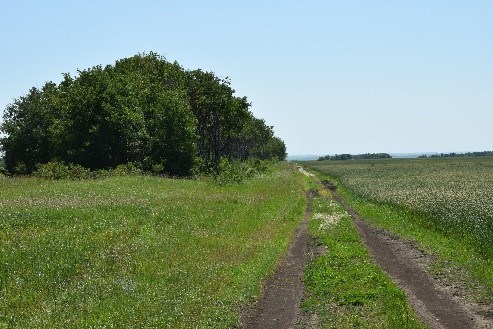Agriculture and Agri-Food Canada (AAFC) is finding ways to show that non-crop areas such as trees, fence lines, ditches and other field boundaries may actually provide an economic net benefit in the crops they neighbour by increasing their yields.
A team at Saskatchewan's Indian Head Farm, led by researcher Dr. Fardausi (Shathi) Akhter, is studying the ecological benefits these non-crop areas provide to the Prairies in multiple disciplines including agroecology, entomology (insects), ornithology (birds), soil microbiology, agroforestry, economics, geomatics and agrometeorology (weather and climate).
"What is unique about this project is the scale of it; we're measuring multiple ecological services simultaneously. This research will provide a missing piece in our capacity to determine where and how to best incorporate these habitats into agricultural systems."
- Dr. Shathi Akhter, Research Scientist - Agro-ecosystems, Agriculture and Agri-Food Canada
How do these areas benefit crops? One part of the hypothesis involve insects. Field boundaries attract pollinators from afar, and they also provide pollinators and the natural enemies of crop pests - ranging from wild bees to carabid beetles to birds - somewhere to live and eat.
Other benefits of field boundaries include modifying the microclimate in the adjacent areas, sequestering atmospheric carbon, improving air and water quality, increasing biodiversity in the agricultural landscape and providing a home for migratory birds.
While the benefits are clear, this comprehensive project is also looking at potential negative outcomes. For example, do weeds from field boundary areas encroach into the crops? Do these areas remove necessary nutrients from the soil? Initial data suggests that they do not; however, upon completion of the project, the team will be able to conclusively report on their findings through a thorough economic and environmental analysis.
Canola Council of Canada agronomy specialist Gregory Sekulic notes that Canada's growing areas are stable and about 15 percent of land continues to experience habitat loss. He feels ecological services should be valued.
"The idea that these areas are a problem is a cultural perception," he says. "Farmers drive around oil lease sites all the time and are happy to because they get money for it; we need to quantify the value of these 'non-market inputs' such as field boundaries and potholes so that farmers can see the dollar value they provide too."
Akhter and her team are compiling three years of data collected from canola fields near Indian Head to link the ecological services provided by field boundary habitats with crop yield. Dr. Akhter is hoping to extend the project into other crops in the future, where she can collect multiple years of continuous data from the same site in a canola-wheat-pea rotation.
Key Discoveries/Benefits
Field boundaries such as treelines and ditches provide ecological services to the crops they neighbour.
AAFC multi-disciplinary research is looking into quantifying economic benefits of these non-cropped areas in large-scale farming systems.
Not only do field boundaries improve crop yield and health, they also provide environmental benefits such as carbon sequestration, improved air and water quality, increased biodiversity as well as a home for migratory birds.

